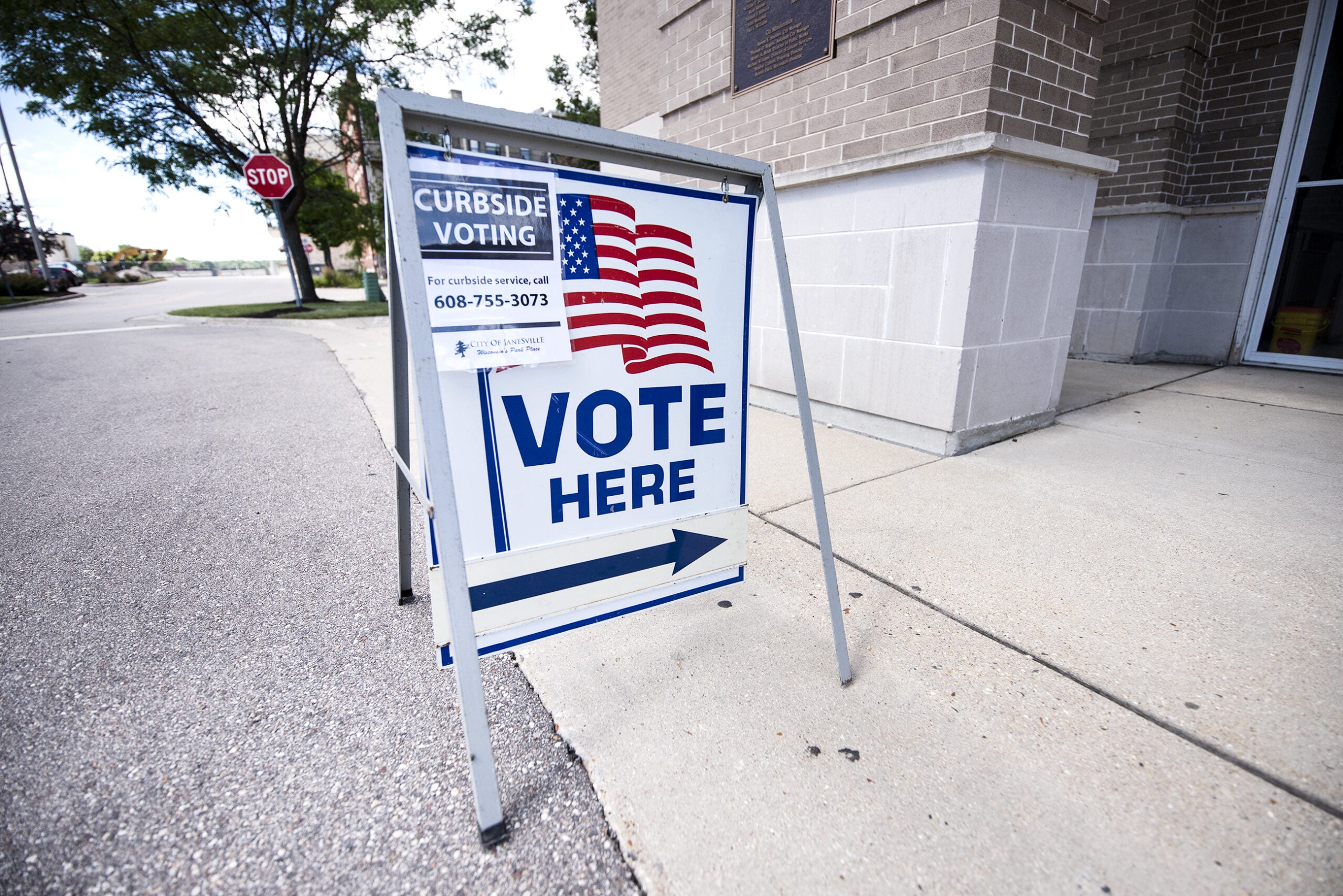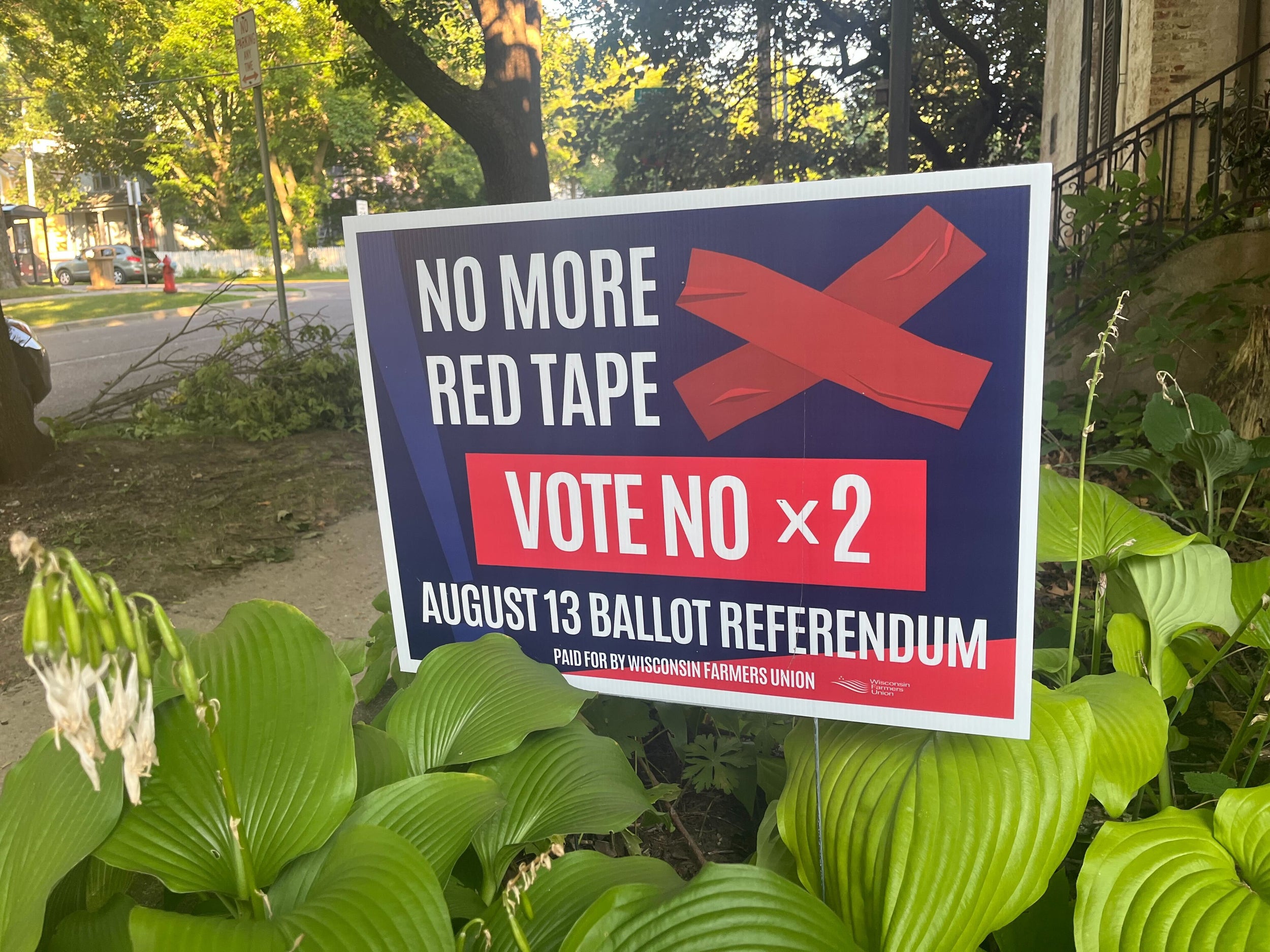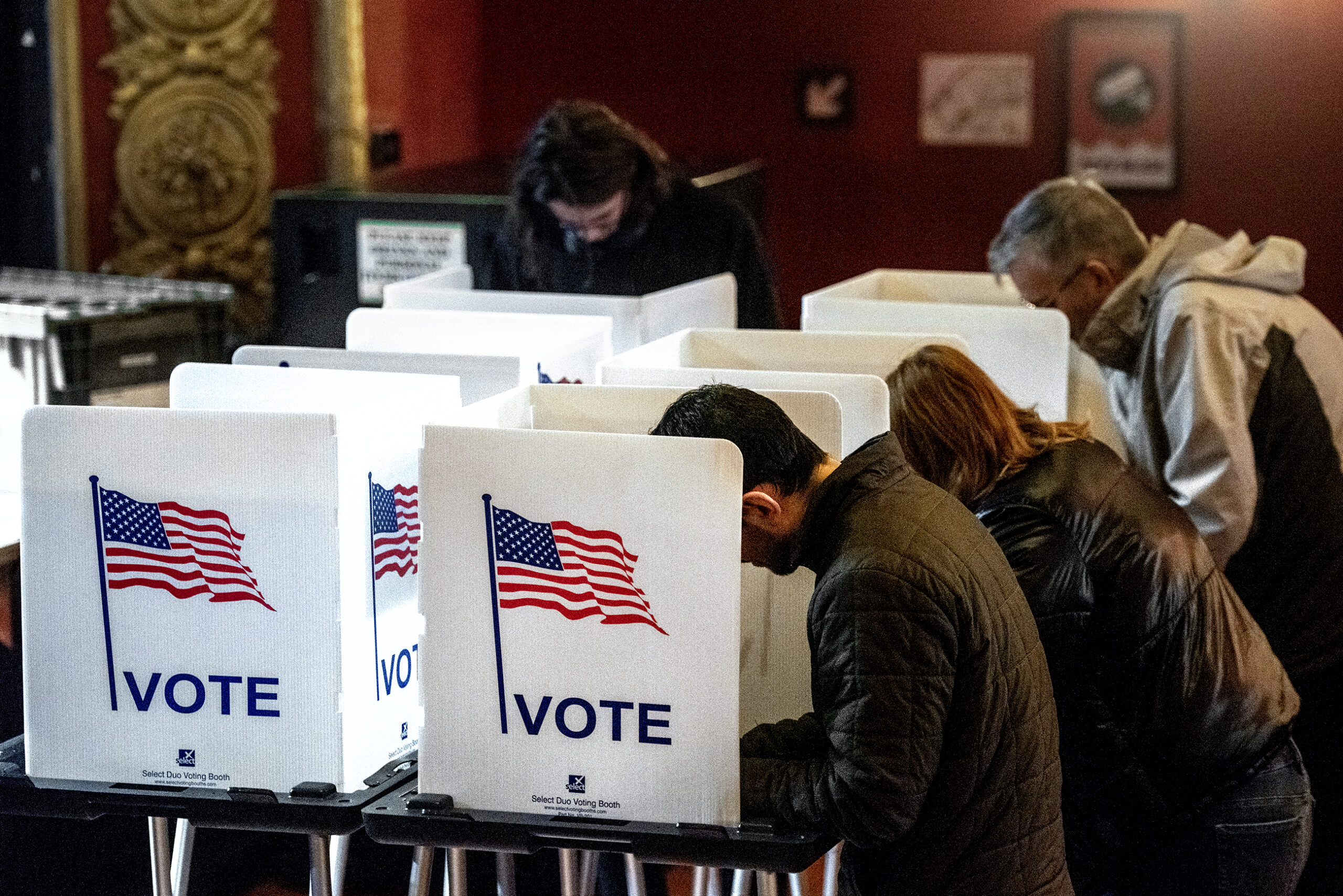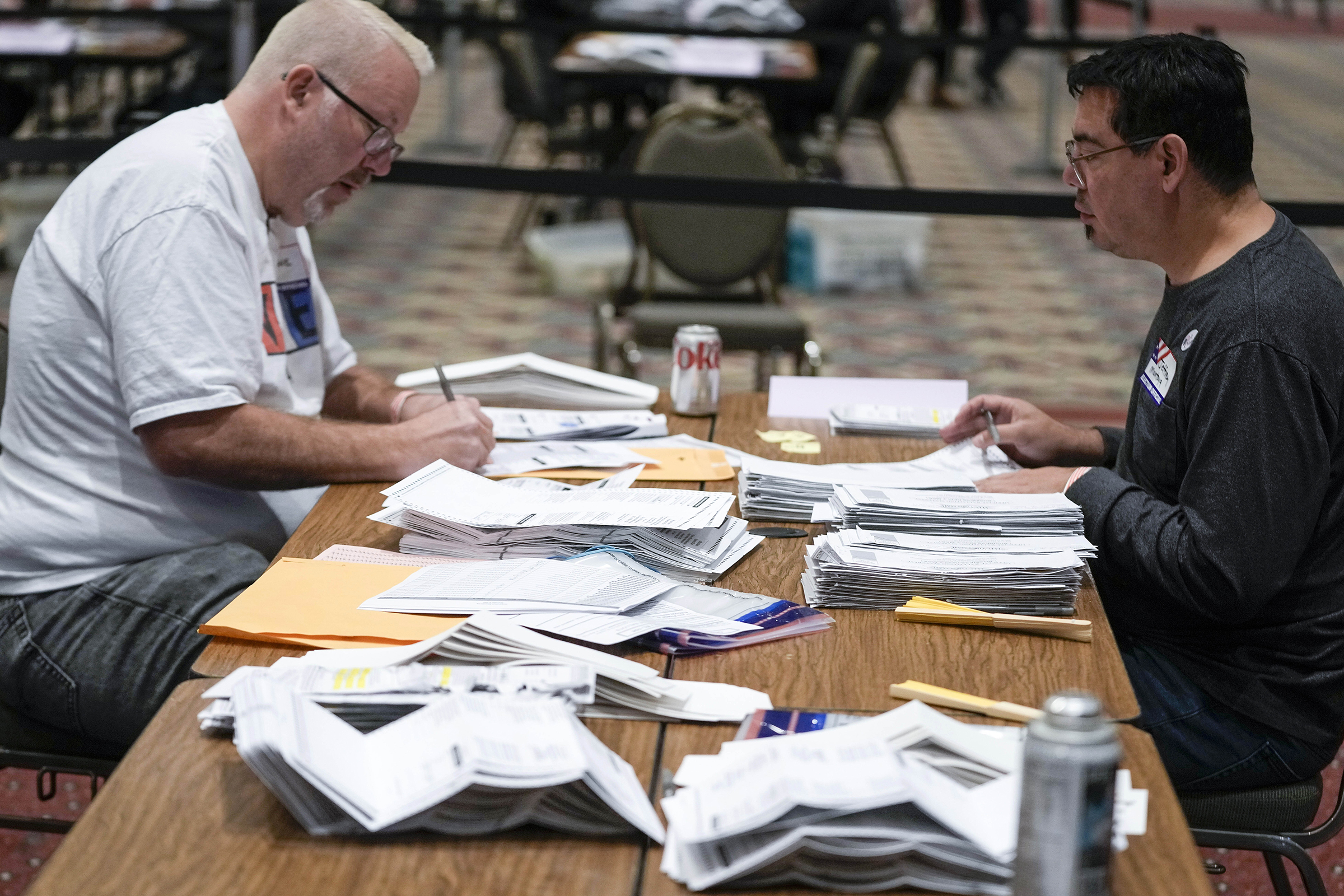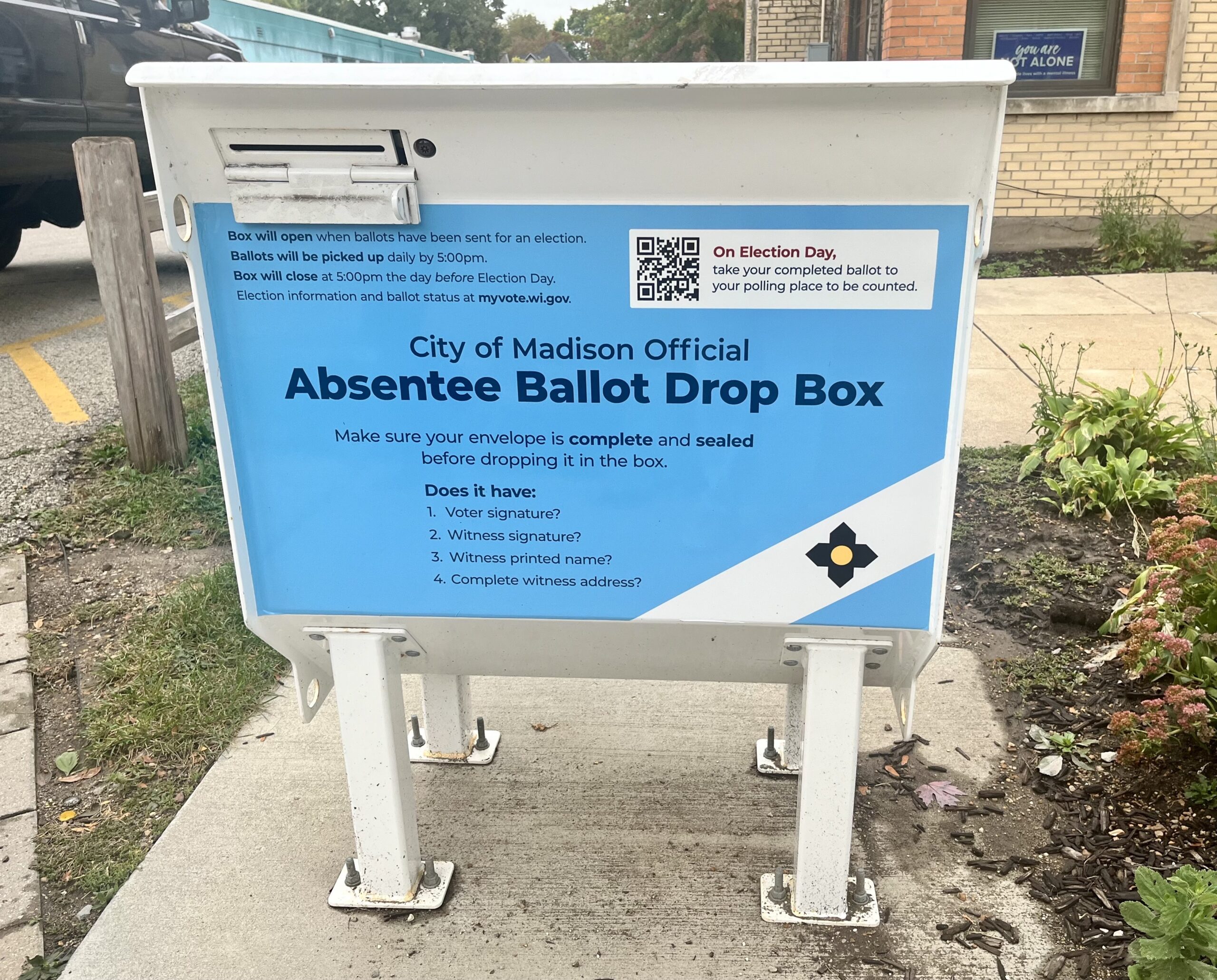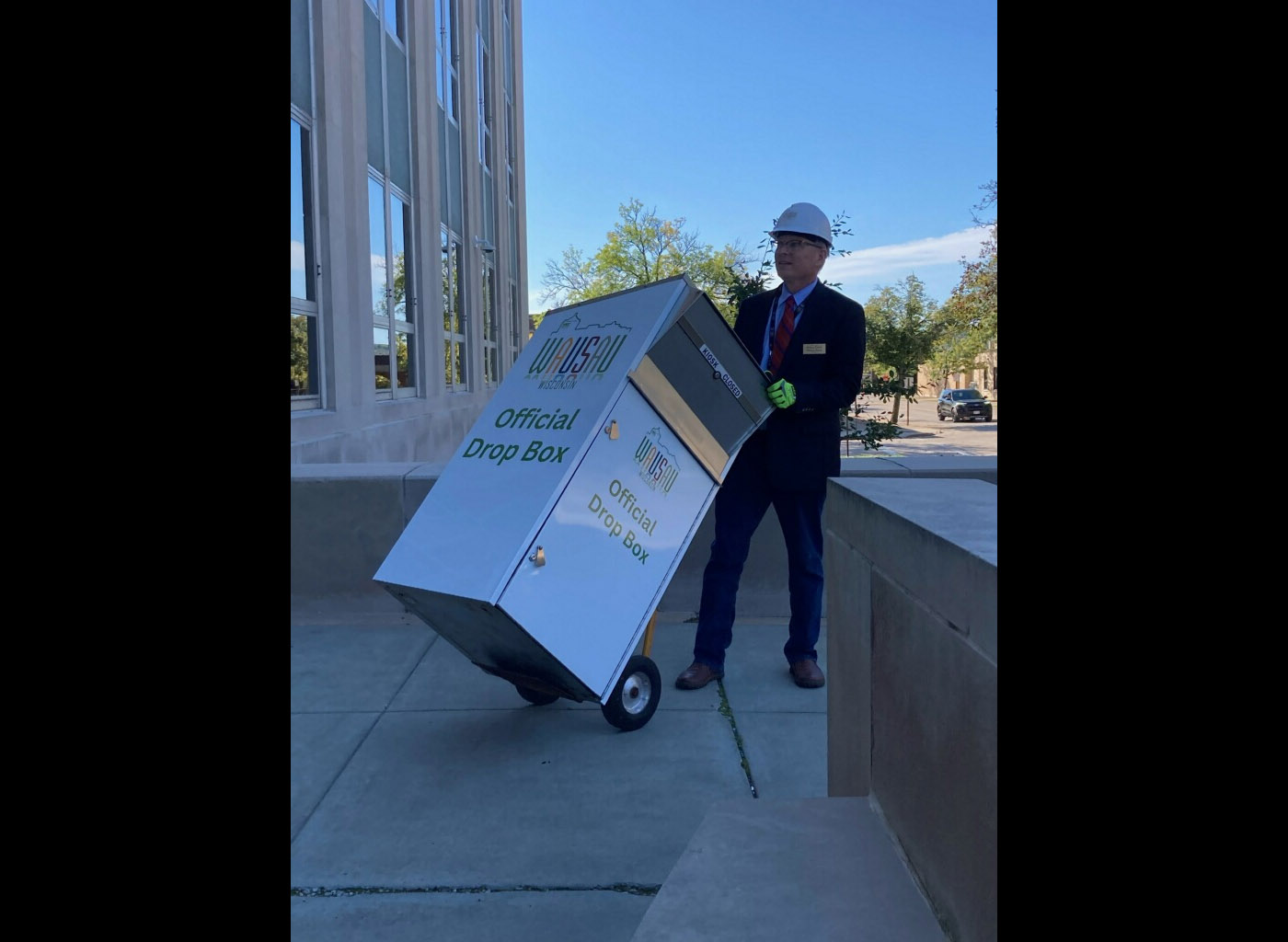Wisconsin voters who are quarantining or even hospitalized still have options to cast their ballots before the end of voting Tuesday.
Wisconsin law allows people who are hospitalized to designate any registered voter to pick up and drop off their ballots on Election Day, even after the regular deadline for requesting an absentee ballot has passed. In March, the Wisconsin Elections Commission voted to expand its definition of “hospitalized electors” to include “those quarantined in their homes due to COVID-19.” They issued guidance to designated people for how to safely pick up and deliver these ballots.
News with a little more humanity
WPR’s “Wisconsin Today” newsletter keeps you connected to the state you love without feeling overwhelmed. No paywall. No agenda. No corporate filter.
Voters who choose this option still need someone to witness their ballots, and the people designated to help still need to bring the voter’s photo ID to the polling place.
Wausau City Clerk Leslie Kremer said her office has had 15 people ask for information on voting from the hospital, and five cast their votes on Friday using the process.
“I expect there will be many more throughout today and tomorrow who need to utilize this option,” Kremer said in an email to WPR on Monday morning.
As coronavirus infections have risen across the state, some county health departments have been overwhelmed and unable to carry out contact tracing or monitor patients who have been ordered to quarantine. In many places quarantine orders are not always understood or followed by everyone. And given Wisconsin’s high levels of community spread of the disease, cities across the state are expecting that some people who vote in person will be sick with COVID-19.
“We have face shields, we have N95 masks, we have gloves, we have hand sanitizers for all of our poll workers, as well as our central count employees,” said Celestine Jeffreys, chief of staff to the mayor of Green Bay.
Jeffreys said the city has encouraged early absentee voting through drive-thru events and drop boxes, and on Friday collected nearly 90 percent of about 32,000 absentee ballots sent out. But some voters in the city and across the state will still vote Tuesday.
As they did in April’s statewide elections, polling places across the state will also have plastic barriers, capacity limits and other safety measures in place.
For anyone voting in person Tuesday who does have symptoms, officials say curbside voting may be the safest option. Polling places are required to offer this service, which allows voters to call a phone number or ring a bell when they arrive and have a poll worker bring a ballot out to them in their cars rather than having them enter the polling location.
Shannon Powell, chief of staff to the mayor of Racine, said curbside voting can be done with minimal contact.
“If you’re sick, you need to wear a mask. Request the curbside and stay in your car,” Powell said. “You can show your ID through the window — we don’t need to take the ID from you. When we hand you the ballot to vote, just crack the window.”
On Friday, the La Crosse County Health Department issued guidance encouraging all voters to wear masks and practice physical distancing, and adding that anyone in isolation or experiencing symptoms of COVID-19 should vote curbside.
These guidelines could apply to tens of thousands of Wisconsinites. Since October 20, nearly 55,000 people in Wisconsin have tested positive for COVID-19. In most cases, that means they and their families and close contacts have been ordered to quarantine in order to slow the spread of the disease — usually for two weeks.
The pandemic has also led to a massive wave of absentee ballot requests. As of Sunday, about 2.1 million absentee ballots had been sent, and 1.9 million had been returned. About 3 million Wisconsinites voted in the 2016 presidential election.
Wisconsin Public Radio, © Copyright 2026, Board of Regents of the University of Wisconsin System and Wisconsin Educational Communications Board.
